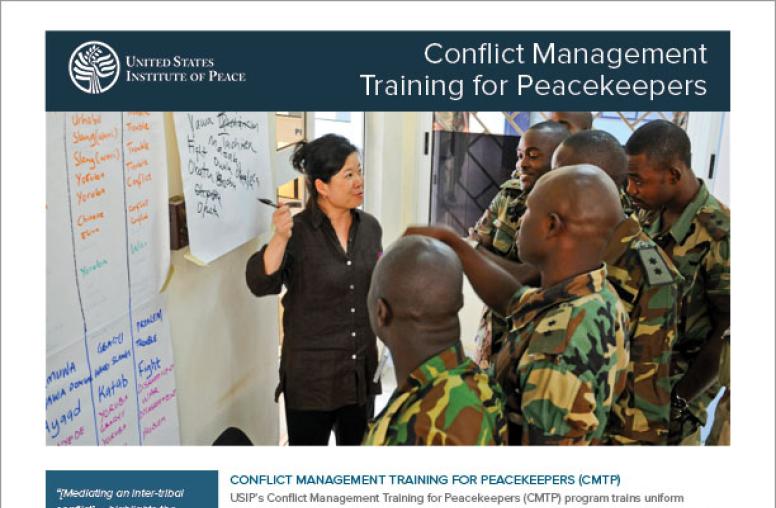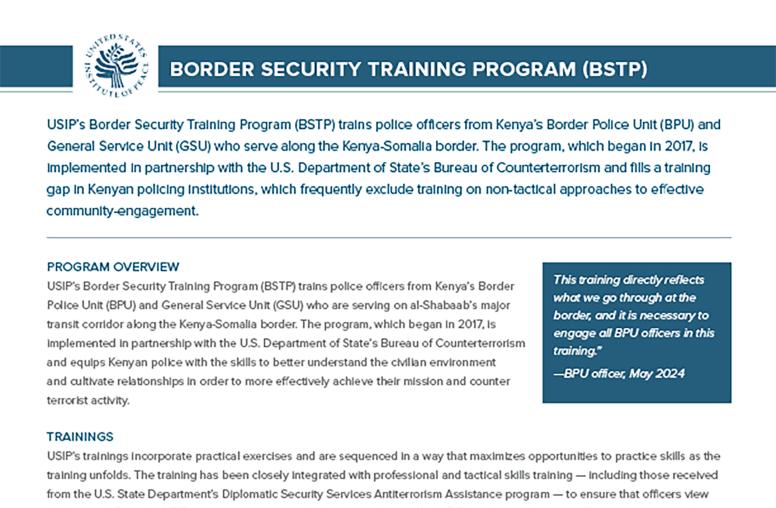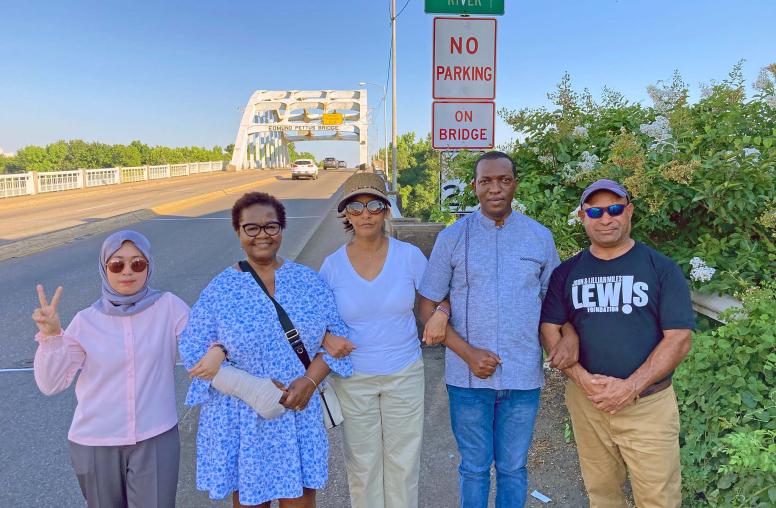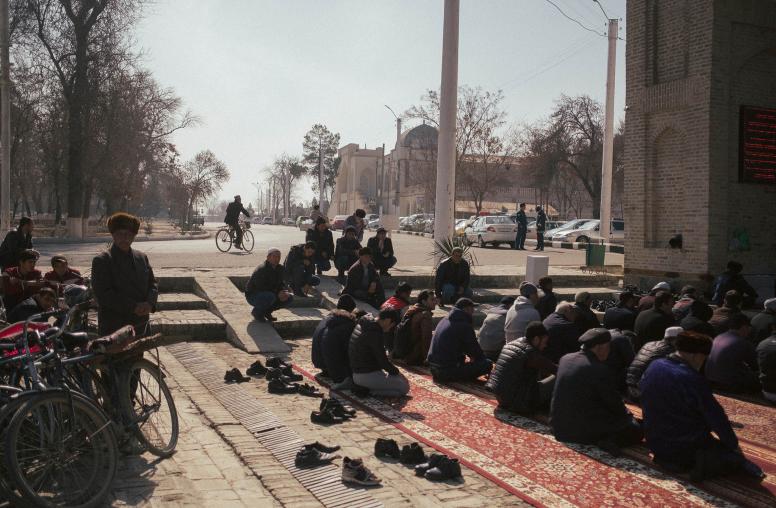Students Learn Conflict Resolution Basics at USIP
On November 18, students from the private Montgomery School in Chester Springs, Pa., participated USIP's educational outreach program.

The United States Institute of Peace’s educational outreach program teaches students basic conflict resolution tools.
On November 18, student visitors from the private Montgomery School in Chester Springs, Pa., participated in one such session. Senior program assistant in the USIP Academy’s Education and Training Center Amanda Fogle-Donmoyer, who led the group, has a background in international education. She said more school groups are visiting USIP during their trips to Washington, and educational opportunities like this session can change the way students interact with each other and the world.
"What started as an abstract session turned into an opportunity to resolve real-life conflicts that the students, as a group, were dealing with,” Fogle-Donmoyer said. “They were able to gain tools to deal with that conflict.”
This conflict resolution education session gives students a hands-on understanding of USIP’s work. During the session, 22 eighth graders participated in age-appropriate exercises similar to those used in USIP’s Academy for International Conflict Management and Peacebuilding. Fogle-Donmoyer said she wanted to show the students that the tools to address conflict are different depending on what and who is involved, and that situations are not always black and white. During the two-hour session, students participated in role-playing exercises, conflict simulations and discussions about conflict resolution.
Students shared their “conflicts,” which for the most part involved interactions with parents, teachers and friends. Chris Gorycki, the Montgomery School’s assistant head of school, said he was glad students had the opportunity to learn some basic ways to examine conflicts and potentially resolve them.
“If they can practice now it will benefit them in the long-run,” said Gorycki.
In one activity, students were asked to put themselves into birth order without speaking. Students used hand and body movements to communicate with each other. For example some students held up fingers to correspond with their birthdates. Fogle-Donmoyer explained that even if groups might want the same things, they often misread each other because of language and cultural misunderstandings.
“Conflict is inevitable and it is going to happen,” Fogle-Donmoyer said. “The goal is to manage conflict so violence doesn’t occur.”
Students also learned that conflict is not always negative. Fogle-Donmoyer added that sometimes conflicts present issues that need to be addressed—such as concerns over resources, rights or politics. She said that moving through those conflicts can be positive.
In another exercise, 12 students lined up facing each other and attempted to pull each other over a line of tape between them. The remaining students watched. Fogle-Donmoyer told the students watching the “mock conflict” that they were just as important to the conflict resolution process. She said people involved in a conflict do not always see the things that outsiders see.
Students also answered questions about how they would respond in sample conflicts on a worksheet, such as “disagreeing with parents” and “loaning things to friends.” A discussion of those responses followed the exercise. The students said they sometimes have difficulty dealing with basic conflicts because they feel powerless, or fear losing friends. Many students said the exercise helped them to understand how they individually deal with conflict as well as the positives and negatives of each response to conflict.
According to trip chaperone and social studies teacher Heather Schelhorn, the school tries to complement what students are learning in the classroom with hands-on experiences, and USIP’s session provided positive reinforcement of their lessons on conflict resolution.
USIP’s National Educational Outreach Officer, David Smith, said USIP hosts approximately 500 students in 20 classroom sessions throughout the year. Approximately 200 of those are middle school or elementary school students.
Explore Further
- View the photo album in full screen
- Learn more about USIP's Education and Training Center
- Visit the Academy for International Conflict Management and Peacebuilding
Additional Information
- Contact National Educational Outreach Officer, David Smith at dsmith@usip.org to learn more about USIP's educational programs for students.
- Learn more about David Smith



